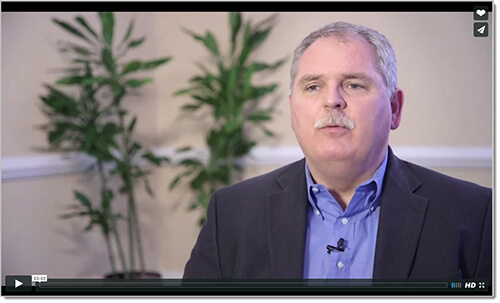A proactive maintenance program improves long-term profitability, increases customer satisfaction and supports growth.
I see this all too often. Frequent equipment breakdowns, excessive scrap, reduced yield, long changeovers, unplanned maintenance costs, and upset customers who aren’t getting what they ordered. Oftentimes, it’s the result of a disconnected maintenance strategy where the prevalent mindset is to “run it 'til it breaks”.
I can't imagine why you wouldn't want to measure equipment performance!
Many leadership teams don’t always connect the value of proactively measuring the performance of their equipment to long-term profitability, customer satisfaction and growth. Maintenance isn’t just a tactical activity—it’s also a strategic imperative that helps to control costs and mitigate business risks.
With increasing pressure on business margins, companies should take a more engaged approach to equipment maintenance—moving from a reactive model to a more disciplined model centered on predictability and maximum reliability.
It's really about aligning equipment and maintenance performance with operations and ultimately, company performance. Taking a proactive approach to equipment maintenance helps businesses to better understand the total operating cost, risks to the business, and to identify opportunities to reduce costs associated with equipment failures.
It is important to understand the reasons for losses, to create a plan to counteract losses, and increase throughput—which effectively creates excess capacity. Many companies' approach is to "run it ‘til it breaks," and then repair or replace broken parts. Most assume this is the most cost-effective way to do systems maintenance. Unfortunately, they don't perceive equipment operating at its optimal levels as an opportunity to save money, or the vision that doing so limits success/growth/performance.
Four Types of Maintenance Strategies
While many companies may think their maintenance planning strategy is unique to them, those plans typically fall into one of four different approaches and levels of performance:
Reactive
The "run it ‘til it breaks" strategy, where maintenance isn’t scheduled; it’s only performed when needed, typically in the case of failure. Because there’s no program, per se, there are no start-up or staffing costs. The critical downside is that this strategy has high costs over the lifetime of the asset due to unplanned downtime, shortened equipment lifespans, and unpredictable labor costs.
- Preventative. This strategy implements maintenance schedules. It can reduce maintenance costs by as much as 12-18%. However, it also carries increased labor costs, due to some tasks being completed unnecessarily.
- Predictive. This strategy uses early detection and elimination of factors that contribute to deterioration. Predictive maintenance can reduce total maintenance costs by up to 25%. Maintenance of this type is not on a schedule. There is also the burden and expense of testing equipment and staff training.
- Reliability-centered. This plan type focuses on critical components, and uses non-destructive testing procedures (such as oil sampling or vibration testing) to initiate maintenance needs. This testing runs deeper than that performed in the Predictive model. Reliability-centered maintenance reduces the probability of sudden system or component failures, and can focus budget funds where they have the biggest impact and benefit.
It makes the most sense for any business that depends on systems and equipment to produce its product to move toward a reliability-centered maintenance program, as it represents the best cost-efficiency and offers the most predictable outcomes.
Measuring The Costs of Poor Maintenance
An ineffective maintenance plan costs money—equipment inefficiencies can cause problems throughout the entire supply chain. So let's look at the three areas where opportunities exist in your operations related to equipment problems:
Availability (downtime):
- Equipment failure (breakdowns)
- Setup and adjustment
Performance (speed):
- Idling and minor stoppages
- Reduced speed of operation
Quality (defects):
- Process defects (scrap and repairs)
- Reduced yield (from startup to stable production)
When measuring equipment efficiency, these three factors—availability, performance and quality—are combined to produce a benchmark called Overall Equipment Effectiveness (OEE). This metric offers a snapshot of how well a company is managing its assets right now, and identifies potential opportunities for improvement. It can be used to benchmark performance within a facility, or across a global network of plants. Once OEE is measured, it becomes the starting point for understanding the current costs and the lost opportunity costs in your business, and future adjustments to equipment maintenance programs.
Recognizing the Need for Change
As it becomes clear that there is room for improvement in equipment strategy, engineering and facilities managers can help executive leadership understand the opportunity. An article on selling maintenance to CEOs suggests that many business executives still see maintenance as an expense. The author notes that front-line engineering managers can help executives understand the three ways a proactive maintenance program can improve a company’s financial performance:
- It lowers the cost of overall maintenance. Planned maintenance is always less expensive than unexpected outage.
- It hedges against the inability to ship orders due to unexpected downtime. When you're able to predict effectively when orders will ship, business relationships are strengthened at all points in the supply chain.
- It extends the life of equipment, and helps it run at full capacity, deferring unnecessary capital expenditure. Equipment that doesn't run at capacity means you buy more equipment prematurely to take up the slack.
- Increased equipment performance, as measured by a higher OEE, facilitates faster and more profitable business growth with existing equipment.
As manufacturing and operations managers are able to communicate these benefits to their business leaders, an effective equipment maintenance plan can be put in place.
8 Steps to a Comprehensive Equipment Maintenance Program
Moving to a reliability-centered plan requires discipline and commitment from all areas of the business, from the leadership down. Such an effort requires a solid and proven plan for getting there. For the best long-term results of any equipment maintenance program, focus on these eight key steps for ensuring a long-term benefit with your equipment maintenance strategy:
Know the current state. Start by examining the production floor, the maintenance department, and the equipment. Area owners and operators provide input for an assessment, which is a systems view of where the factory is from a maintenance standpoint. Even if you understand the importance of this approach, does your team, and how do they act? OEE for each piece of equipment is established.
Establish a steering committee or ownership structure. Any valuable maintenance program requires a team for full implementation and sustainment. These are set as the organization establishes a “maintenance vision.”
Identify critical equipment. One of the roadblocks to successful implementation is the enormity of the scope—and therefore the scarcity of resources to get the work done. Let the data tell you what equipment is truly critical.
Determine the condition of each piece of critical equipment. Look at each sub-system on the equipment (hydraulics, pneumatics, controls, etc.) to understand its current state. This helps you plan and prioritize upgrades, overhauls, rebuilds and new equipment purchases—a huge business advantage.
Conduct a maintenance skills assessment, implementing a skills matrix. Gaps in skills must be addressed. This is also a good time to look at the structure of the department. Does your operation require preventative or predictive maintenance teams and planners?
Create a communications plan and determine initial metrics/measures. It is necessary that both maintenance and production organizations know that changes are in store for everyone.
Prioritize and plan workshops/events/training. Effective communication is the key to any new program implementation.
Implement, assessment, and improvement. Once the plan is in place, discipline is required to remain committed to every step along the way. Change is hard, and resistance is almost guaranteed. Keep the ultimate goals in mind.
Once a comprehensive plan is in place, it's important to remember that it's cyclical; you set standards, make a plan, do your work, test the results, make adjustments to your plans, and start over again. The ultimate goal is to have all your equipment running at its peak, optimal level, using a reliability-based maintenance plan. Doing so prolongs equipment life, and delays the need for site expansion or further capital expense.






